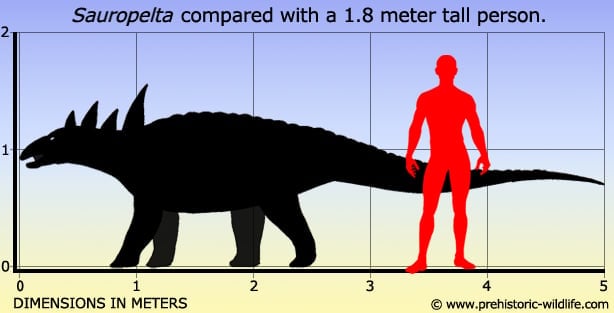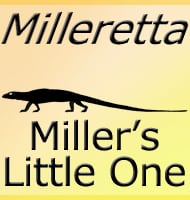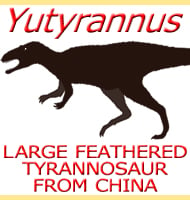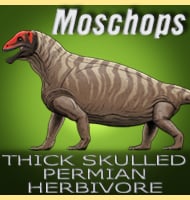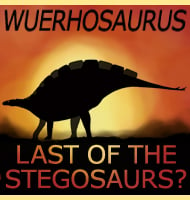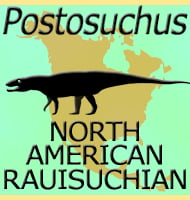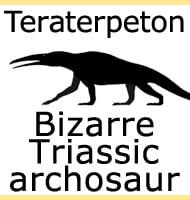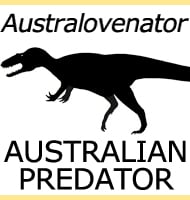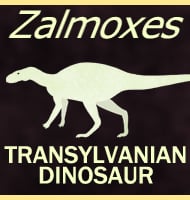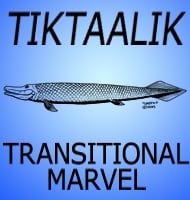In Depth
Sauropelta is one of the better known nodosaurids, armoured dinosaurs that are thought to be ancestral to the later and more heavily armoured ankylosaurids. This armour was in the form of lots of osteoderms (bony plates that are held within the skin that are also sometimes called scutes) that varied greatly in size over different parts of the body. The largest of these were huge spines that were attached to the neck, and while earlier reconstructions conceived these to belong to a single row on each side of the neck, new interpretations have the spines forming two parallel rows on each side of the neck. The upper row of spines pointed up and backwards, while the lower row pointed out to the side at a backwards angle, together forming an exceptional defence for what is traditionally one of the most vulnerable areas of an animal’s body.
As a relatively slow dinosaur, the armour would have been the single best chance that Sauropelta had of surviving attack from predators. One predator from the Cloverly Formation that Sauropelta may have had contact with is Deinonychus. The large spines that rose up from the neck and shoulders in particular would have made it incredibly difficult for a dromaeosaurid like Deinonychus to jump onto the back of Sauropelta and stab at its neck, a tactic that is thought to have been favoured by dromaeosaurids, and may have been the reason why Sauropelta evolved to have such a defence around its neck.
Sauropelta also had an exceptionally long tail, in fact half of its body length was actually tail. This tail was supported by a network of tendons that kept it off the ground, but it is uncertain if it could have used its tail to strike at attacking predators, something that has been proposed for the earlier Gastonia. As with other nodosaurids, Sauropelta had forelegs that were shorter than the rear legs, something that would have given it a posture where its mouth was closer to ground which would have helped it in its life as a low browser.
Study of the fossil sites that Sauropelta is from has indicated that these parts of Montana and Wyoming would have been low lying wetland that was an expanse of rivers and floodplains during this stage of the Cretaceous. The narrow mouth and leaf shaped teeth of Sauropelta suggest that it would selectively browsed upon the low growing soft vegetation that would have been in this area. Other herbivorous dinosaurs from the Cloverly Formation that Sauropelta would have shared this habitat with are the ornithopods Tenontosaurus and Zephyrosaurus.
Further Reading
– Stratigraphy and paleontology of the Cloverly Formation (Lower Cretaceous) of the Bighorn Basin area, Wyoming and Montana. – Bulletin of the Peabody Museum of Natural History 35: 1–234. – John H. Ostrom – 1970. – Skeletal reconstruction and life restoration of Sauropelta (Ankylosauria: Nodosauridae) from the Cretaceous of North America. – Canadian Journal of Earth Sciences 21 (12): 1491–1498. – Kenneth Carpenter – 1984. – Description of a new skull of Sauropelta cf. S. edwardsi Ostrom, 1970 (Ornithischia: Ankylosauria). – Journal of Vertebrate Paleontology 21 (Supplement to 3 – Abstracts of Papers, 61st Annual Meeting of the Society of Vertebrate Paleontology): 87A. – William L. Parsons & Kristen M. Parsons – 2001.
